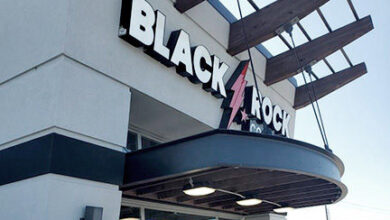The Makings of a Black Hair Desert

DaraLyn says that the other stylists in her area who know how to work with textured hair are not active on social media. This, DaraLyn says, makes it harder for their work to be seen and to connect with potential clients. “I would say there is a demand in my area,” she says. “I think there are few options for textured hair care because many stylists are scared of textured hair. They’re not educated on the styles [and] they don’t want to mess up someone’s hair because they don’t understand it.”
On the opposite coast of the U.S. exists this same fear and hesitancy towards textured hair. “There is a very high demand for Black hair care in my area, and there are very few stylists and customers who actually know about it,” says Alizè Breary of Middletown, New York, a city in the Hudson Valley region of the state. Breary is the owner of The Hair Bar Orange County, one of the few natural hair salons in the area.
Breary has been working with hair since she was 11 years old, as her family rarely visited the salon when she was growing up. At The Hair Bar, Breary offers a wide range of services — knotless and box braids, faux locs, cornrows — but her expertise is in scalp analysis. Her clients are mainly Black and Hispanic women, she does the hair of everyone from ages three to 80, and she has clients who travel from New York City, Vermont, and even Virginia to see her.
In the Midwest, 32-year-old Denisa Ford-Washington says she is one of very few professional stylists who specialize in textured hair in her area of over 80,000 residents. She specializes in braids at her own salon, Natural Braiding & Beauty; she says she’s the only Black professional stylist with a brick-and-mortar salon in her area. Serving such a large community means that Ford-Washington is booked up at least two weeks in advance. Originally from the Twin Cities, Ford-Washington’s experience servicing her Duluth, Minnesota, community has been taxing.
“You’re not just doing a service where you’re getting to know these clients, you actually are educating them as well,” Ford-Washington says. “It puts a lot of weight and pressure on you to perform at a higher rate than a stylist in the cities… In a desert, no one knows what to do. [The clients can] overload you and it becomes somewhat overwhelming, because now you become the face and the voice of those that lack the components that are needed to keep their hair healthy.”
All three stylists Allure spoke with face moderate to significant demand for their services despite working in predominantly white communities. Ford-Washington has some clients that travel nearly three hours and across state lines to see her. But even though the work is steady, Black hair deserts narrow options for its residents, clients, and stylists. “The opportunities here are limited,” Ford-Washington shares. “I shouldn’t have to put my skills on hold to be in a desert where I have no chance of getting out. I think my clients are going to panic if there’s not an up-and-coming stylist here that wants to take over… they’re going to go back to traveling or not doing anything at all [to their hair]. I’m very grateful for the clientele I have now, but there’s no room for growth here, there’s no room to consult with any other stylists, there’s no room for sisterhood here, because there’s no other salons doing [braiding]. When I want to take classes to make sure my skills are up to par, I have to personally travel — and if I was in a predominantly Black area, I wouldn’t have to do that.” Perhaps that is one reason why other Black stylists aren’t rushing to come to the area even though the need is evident.
























































